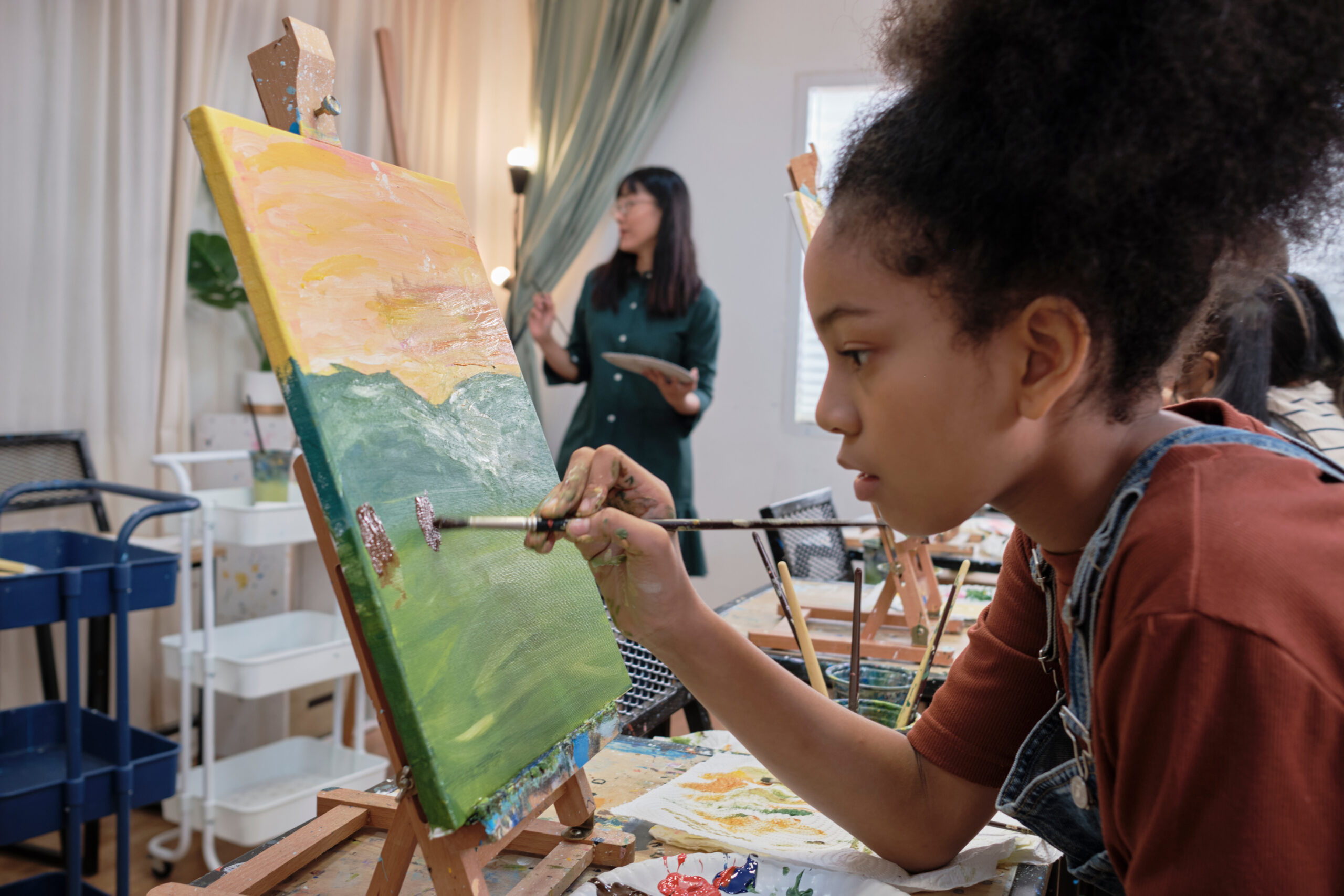In the first episode of season two of American Classroom: Stories of Building a Civil Society, we sat down with artist and educator Ben Sowards to explore what it means to grow into the kind of creator only you can become. As a designer for the U.S. Mint, Sowards has created coins and medals for the Bush, Reagan, and Trump families, and his commissioned portraits and paintings hang in collections around the world.
The Artist as Student and Teacher
Sowards shares that the students who succeed in art are typically those who are intrinsically motivated. These individuals do not wait for instructions—they sketch constantly, explore media, and treat art as a necessity rather than an assignment. His preferred students are those who already operate with urgency and energy and only need guidance to redirect that momentum.
He emphasizes the importance of long-term investment in skill. There is a point, he explains, when practice yields fluency. For visual artists, that point arrives when they move beyond formulas or imitation and begin working with intuition. That transition, often described as a flow state, marks a major shift in artistic development.
Childhood Origins and National Symbols
Sowards’ love for history and art began in childhood. Conversations around the dinner table frequently focused on early American political ideals, and his family’s business travel exposed him to significant historical sites. This early exposure led to a fascination with the Founding Fathers and American symbolism, eventually culminating in projects like his illustrated version of Seven Miracles That Saved America with author Chris Stewart.
His work with the U.S. Mint extends this trajectory. He has designed multiple coins and medals, including a presidential medal and portraits selected by the Bush and Reagan families. While some of his work is reviewed and approved through formal channels, other projects have involved direct collaboration with the subjects including President Trump.
This national service through visual art, he explains, has carried personal meaning. The opportunity to contribute to the visual identity of the country through currency has felt both patriotic and deeply rewarding.
Practicing with Purpose
The conversation turns toward mentorship and learning. For aspiring artists who struggle with early failures, Sowards offers perspective: the beginning of any creative journey involves flawed efforts, but those efforts matter. He encourages intentional imitation—studying great works not to replicate them, but to identify technical gaps and to build competence.
Sowards critiques the tendency among young artists to compare their sketchbooks to the curated portfolios they see online. He believes that creative growth requires solitude, persistence, and time away from distractions. Learning to see—to observe, interpret, and reproduce—is a transferable skill that strengthens cognition across many fields.
Technology, AI, and Human Value
As artificial intelligence continues to generate images with increasing precision, Sowards acknowledges both its potential and its limitations. He sees value in using generative AI to ideate, explore forms, and iterate quickly. However, he draws a line between AI output and human creativity, noting that the latter is grounded in intention, purpose, and lived experience.
He suggests that as AI art becomes more common, audiences will grow more discerning. Human-made art, with all its imperfections and idiosyncrasies, he thinks will continue to be highly valued. The role of the artist should continue to evolve into one that focuses more on intent and meaning than on raw production.
Encouraging Art at Home
The conversation closes with a strong appeal to parents. Sowards urges families to provide opportunities for creativity, especially when schools lack formal programs. Just as it would be difficult to raise a musician without an instrument or a reader without books, nurturing a visual artist requires basic materials and space to explore.
He shares that many of his college students pursue art despite their parents’ discouragement. He encourages families to be open to creative vocations, noting that job satisfaction among professional artists is typically high, even if income varies. Exposure to working artists—whether in person or online—can demystify the profession and provide valuable models for young learners.
Even if a child does not become a professional artist, early engagement with visual expression cultivates observation, discipline, and self-reflection. These are lifelong assets, whether applied in medicine, engineering, design, or public service.
Art as Civic Practice
Throughout the conversation, Sowards reflects on the connection between creativity and civic responsibility. Drawing from examples like Jefferson and the Founding Fathers, he points out that artists and innovators share a common trait: the ability to envision something before it exists and then bring it into reality. He highlights how art shapes the way a society is perceived, both internally and abroad—whether through architecture, public spaces, or even coin design. When students are taught to think creatively, regardless of their future profession, they become more acute observers, more capable thinkers, and ultimately more visionary contributors to society.
